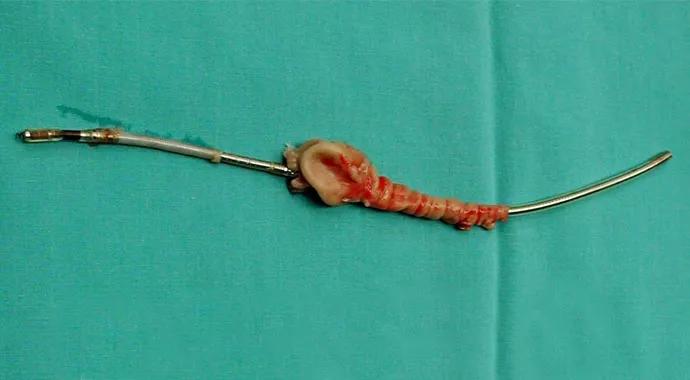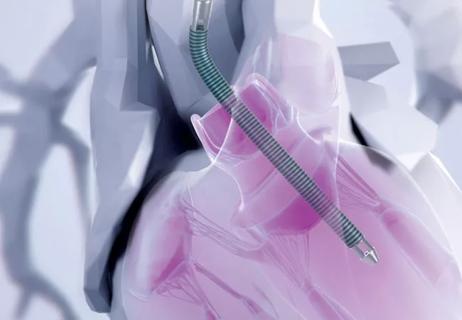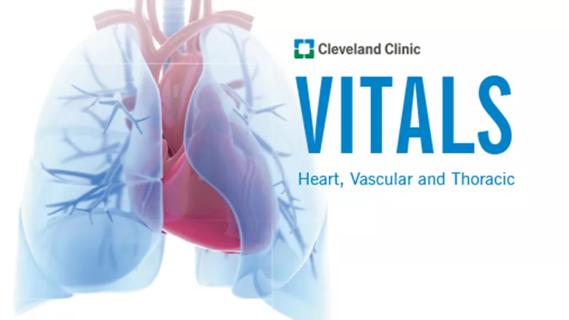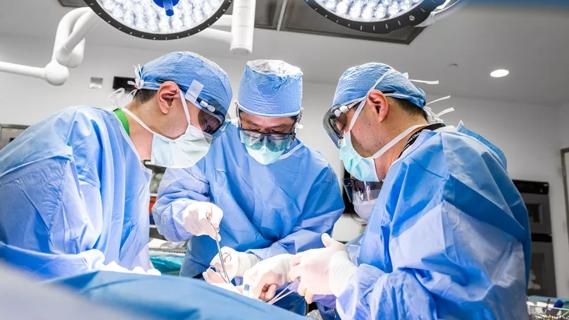Lead dwell time and manufacturer emerge as independent predictors of success in registry study

For cardiac device leads in place for more than 20 years, transvenous extraction is more likely to be successful with implantable cardioverter-defibrillator (ICD) leads than with pacemaker leads, despite the need for more specialized tools to complete the procedure with ICD leads.
Advertisement
Cleveland Clinic is a non-profit academic medical center. Advertising on our site helps support our mission. We do not endorse non-Cleveland Clinic products or services. Policy
So finds a comparative analysis of Cleveland Clinic’s experience with the two types of cardiovascular implantable electronic devices (CIEDs) over a recent nine-year period. The study was published in the Journal of Cardiovascular Electrophysiology (2024;35:1382-1392).
“We found that the success rate with transvenous lead extraction was higher for ICDs than for pacemakers when the leads had a dwell time of more than two decades, but not when the dwell time was shorter,” says corresponding author and Cleveland Clinic electrophysiologist Thomas Callahan, MD. “Major complication rates were similar between the two device types regardless of dwell time.”
Transvenous lead extraction (TLE) is integral to CIED management, and leads for ICDs and pacemakers differ in structure and diameter, as do their tensile strengths. Previous reports have suggested that these variations may affect TLE success and complications. The biggest obstacle to the procedure is fibrotic tissue growth and calcification, particularly if device dwell time is lengthy.
While experience with TLE for CIEDs has been explored in single-center and multicenter registry-based studies, few comparisons have been done of TLE for implantable ICDs and pacemakers, and none are recent. To fill that knowledge gap, Cleveland Clinic researchers performed a detailed analysis of ICD and pacemaker TLE in patients with long-duration CIEDs at their high-volume center to assess efficacy, safety and procedure characteristics such as lead age and type of extraction device used.
Advertisement
The researchers evaluated data from consecutive patients in the Cleveland Clinic Prospective TLE Registry who underwent TLE between February 2013 and April 2022, defined as removal of a lead that had been in place for more than a year or that required specialized extraction tools.
Overall, 1,617 patients met the inclusion criteria, consisting of 810 patients who underwent ICD lead extraction (885 ICD leads extracted) and 807 patients who underwent pacemaker lead extraction (1,352 pacemaker leads extracted).
Procedural success was categorized in alignment with a 2017 consensus statement from the Heart Rhythm Society and a 2018 consensus statement from the European Heart Rhythm Association:
The researchers also analyzed major complications, defined as those related to the TLE procedure that were life-threatening or resulted in death, as well as unexpected events that resulted in persistent or significant disability and/or required surgical intervention.
Compared with patients in the pacemaker group, those in the ICD group were significantly younger and more likely to be male and had a significantly lower median left ventricular ejection fraction. Median lead age was greater in the ICD group than in the pacemaker group (8 vs. 7 years; P = .001).
Key outcome findings included the following:
Advertisement
Multivariable analysis revealed the following as independent predictors of incomplete lead removal:
“The finding that the manufacturer is an independent predictor of incomplete removal for both ICD and pacemaker leads suggests that lead design characteristics, which differ across manufacturers, influence extractability independent of lead age,” Dr. Callahan observes.
“This analysis of prospectively collected data from our high-volume center can help guide practice around transvenous lead extraction regardless of device type,” notes Oussama Wazni, MD, MBA, Section Head of Clinical Electrophysiology and Pacing. “One of the key insights it provides is the pattern of differences in likely injury sites between extraction of ICD and pacemaker leads. Recognition of these differences can improve the safety of lead extraction moving forward.”
“This study demonstrates Cleveland Clinic’s excellent outcomes in extraction of both ICD and pacemaker leads with high procedural success and low complication rates in a complex patient population,” adds Tarek Malas, MD, a cardiac surgeon who provides backup in TLE cases. “At our center, electrophysiology and surgery collaborate closely in a multidisciplinary approach to share our collective expertise and ensure optimal patient care for lead extraction.”
Advertisement
Advertisement

Medical and surgical perspectives on current and emerging uses of ECMO and Impella

Launch of the tool promises to reshape quality assessment across the specialty

The case for a thoughtful approach to CTO and minimally invasive options for CABG

How the tool could help physicians alter management in real time

Preoperative Impella 5.5 placement can provide a critical safety net for high-risk patients

Technique may lay groundwork for personalized decision-making in procedural intervention

Check out our latest volume and outcomes data in these key areas

New research indicates feasibility and helps identify which patients could benefit